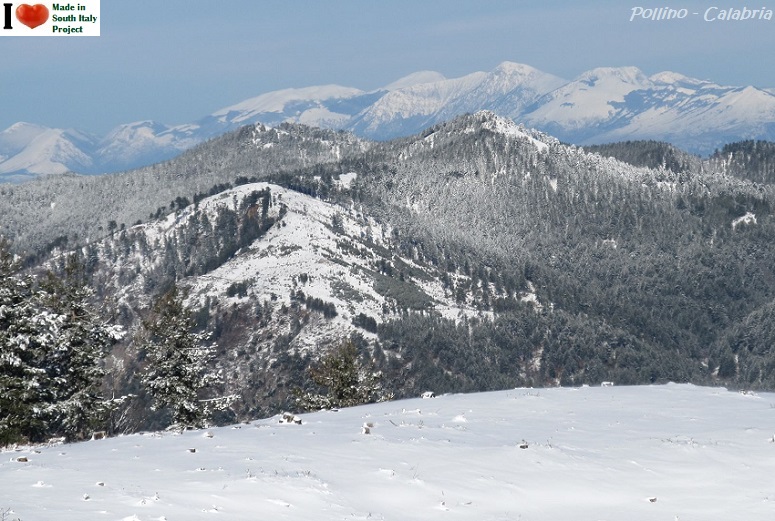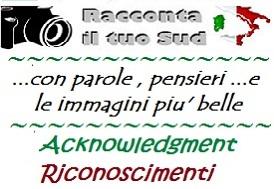Pollino National Park
The Park is in-between Basilicata and Calabria: its natural borders are the Sinni River valley in the North and the Castrovillari plain in the South.
The Pollino mountain range has a specific geology and landscape.
East to West, it covers a radius of over 30 km that enclose various truly unique habitats.
How to Get There:
By car : Highway A3 reaches most Park municipalities, exiting the area between Lauria and Castrovillari; freeways SS 653 and SS 92 allow access to those coming from the Ionic side.
By bus : Many major cities such as Bari, Napoli, Roma, Firenze, Perugia, and Milano are linked to various towns located in the park .
Train stations : Sapri, in Campania; Scalea, Paola, Roggiano Scalo - San Marco Argentano, Trebisacce e Sibari, in Calabria; Policoro e Maratea in Basilicata.
Nearest airport : Lamezia (Calabria) Naples ( Campania) or Bari (Puglia).
Towns located within the Park in the Basilicata territory - Viggianello, Valsinni, Terranova di Pollino, Teana, Senise, San Severino Lucano, San Paolo Albanese, San Giorgio Lucano, San Costantino Albenese, Rotonda, Noepoli, Lauria, Latronico, Episcopia, Chiaromonte, Carbone, Castelluccio Superiore, Castelluccio Inferiore, Calvera, Francavilla in Sinni, Fardella, Cersosimo, Castronuovo Sant'Andrea, Castelsaraceno.
On the Calabria side : Acquaformosa, Aieta, Alessandria del Carretto, Belvedere Marittimo, Buonvicino, Castrovillari, Cerchiara di Calabria, Civita, Francavilla Marittima, Frascineto, Grisolia, Laino Borgo, Laino Castello, Lungro (Ungra), Maierà, Morano Calabro, Mormanno, Mottafollone, Orsomarso, Papasidero, Plataci, Praia a Mare, San Basile, San Donato di Ninea, San Lorenzo Bellizzi, San Sosti, Sangineto, Santa Domenica Talao, Sant'Agata d'Esaro, Saracena, Tortora, Verbicaro.
|
Pollino National Park - Basilicata & Calabria

In Brief: Established only a few years ago, Pollino National Park, comprised of 171.132 hectares, is the second largest National Park in Italy.
The Park's Authority is committed to promoting the Park and making it accessible to a widespread public.
23 out of 25 structures, shelters, museums, botanic gardens, etc. as well as one nature trail, are accessible to visitors with mobility limitations such as elderly people, children and people with disabilities.
The Northern (Basilicata) landscapes are smooth, whereas the Calabria lanscapes are characterized by steep, bare surfaces.
The highest peaks (Serra Dolcedorme, 2.267 m; Pollino, 2.248 m; Serra delle Ciavole, 2.127 m and Serra del Prete, 2.181 m) are made up of limestone.
At lower elevation, erosion phenomena can be seen at the Raganello stream gully on the Ionic side of the massif. Moraine debris and erratic boulders (enormous rock brought down by glaciers) are evidence of the last ice age and can be found on the Pollino and Acquafredda plains.
|
|
Itineraries: The entire Park area is crossed by numerous trails, which allow easy and interesting walks and hikes. Particularly beautiful itineraries include those leading to the Pollino plains, to the Dolcedorme peaks, to the Grande Porta del Pollino, to the Serra del Crispo, to Serra delle Ciavole and to the Ruggio plain.
Interesting short walks are the ones to Belvedere di Malavento, to Pollino Madonna and to the Raganello Gorge.
The De Gasperi and Ruggio plain lodges are the starting point for a great number of hikes.
There are interesting karstic phenomena of erosion. Dolines, swallow-holes and plains are widespread in different locations such as: the Pollino plains, the Ruggio plain and Iannace plain, the 683 m. deep Abisso (abyss) del Bifurto (683 m deep) and the spectacular caves of Serra del Gufo.
The whole area is filled with springs, from which many streams and torrents flow, including some of particular importance such as the Frido, Peschiera, Duglia and Raganello.
One of Pollino's traits is that it is isolated from surrounding areas. For this reason, many populations - particularly those of Albanian origin and of Orthodox religion, sought refuge and still live in this area.
Their first settlements date back to the period from 1470 to 1540 after the invasion of Muslim Turks and the advance of the Ottoman Empire.
Wildlife: The Park's vegetation is diverse and rich in species. However, the most interesting characteristic is the presence, at high altitude, of the biggest Italian population of the Bosnian pine (Pinus leucodermis), a Balkan Peninsula conifer rarely found in Italy, evidence of the geographical connection of the two peninsulas in past geological eras.
Furthermore, on the mountains is present the Apennine biggest forest of the Silver fir.
At high elevation there are many extended beech woodlands while at lower elevations Turkey and Downy oaks are dominant together with the Sweet chestnut tree; in more thermophiles areas Holm oaks are dominant.
It is obvious that Pollino's greatest heritage is its forests.
Some of the typical plants of the Southern Apennines are the Ajuga tenorii and the Linaria purpurea.
On the Mount Orsomarso although few in numbers Wildboars and Roe deers still survive, the latter are likely the last specimens of the Italian native population.
Other mammals are the Apennine wolf, strongly present throughout the region, the Porcupine, the Dormouse and the Forest dormouse, as well as the Otter in limpid rivers.
There are various species of rare birds such as the Golden eagle, the Peregrine falcon and the Black woodpecker.
The reptiles include the rare Hugy viper and amphibians are rich with protected species such as the Spectacled salamander and the Alpine newt.
History and Culture: The intricate system of ridged trails through the territory from east to west, and the rich archaeological, historical and anthropological heritage are elements that clearly demonstrate a very ancient human presence in Pollino National Park.
Trading, migrations, sheep herding and the presence of different peoples is an evidence of harmonious integration of the different cultures.
The oldest archaeological finds are found in Grotta Romito at Papasidero; in the cave, there is a profile of Bos primigenius an ancestor of the bovine drawn almost 12 thousand years ago.
Pollino, however, is especially famous as a land of Greek and Roman colonization, Barbarian invasions, Byzantine influence, Norman conquests: the cultural influence of these peoples is still alive today in the habits of local communities and in art forms.
Christian Albanian communities, driven away from their original villages by the Turkish, settled in the Pollino region, kept their typical Oriental character with white houses and sacred Byzantine art.
They jealously keep their arabesque culture, speak their language and continue demonstrating how it is possible to make fabric from Broom while living in consolidated integration.
There are important centres of Byzantine religious structures at Cersosimo, San Paolo Albanese and especially at Lungro, Albanian spiritual centre with Greek cathedral San Nicola di Mira. Ridge settlements are widespread and typical of Pollino's landscape, like Chiaromonte and Morano Calabro that have kept their medieval characteristics.
In Morano Calabro there are extremely noteworthy artistic sacred buildings: the Church of Saint Bernardino, 1400, has a beautiful Gothic portal and a Venetian keel ceiling; the churches of San Nicola and San Pietro are also outstanding.
The ruins of a Norman manor are sheltered on the hill. The Castle of Castrovillari portrays its Aragonese origins, designed and built with a square plan and angular, cylindrical towers in 1490.
Typical Products and Craftwork: In towns inside the Park, pottery, ceramic and fabrics are made. Agriculture and sheep farming are of high quality as human impact in the area is scarce.
Furthermore culture, tradition and craft of Albanian communities are still alive, specially in the areas of San Costantino Albanese, San Paolo Albanese (Basilicata) and in Farneta (Calabria).
|
 |
| |
 |
La vetrina ideale per promuovere i vostri prodotti e servizi sul mercato Nord Americano ma che potrebbe essere un punto di visibilità anche nei vari mercati internazionali.
AZIENDE - PRODUTTORI - STRUTTURE RICETTIVE - GUIDE TURISTICHE - TOUR OPERATORI
Ai nostri visitatori piace il Sud Italia, vuoi dire loro qualcosa?
Il nostro obiettivo e' quello di promuovere prodotti tipici del Sud in un contesto di marketing globale, e allo stesso tempo proporre
il nostro Meridione come alternativa turistica, ben consapevoli che il successo dell'uno è essenziale per il successo dell'altro.
Paesi di provenienza dei visitatori in ordine numerico
Stati Uniti - Canada - Italia - Gran Bretagna - Australia - China - Germania - Francia - Nuova Zelanda - Olanda
Coloro interessati ad inserire la loro attivita'/azienda/ nel sito
sono pregati di mettersi in contatto usando il modulo soprastante .
Per saperne di piu'...

|







